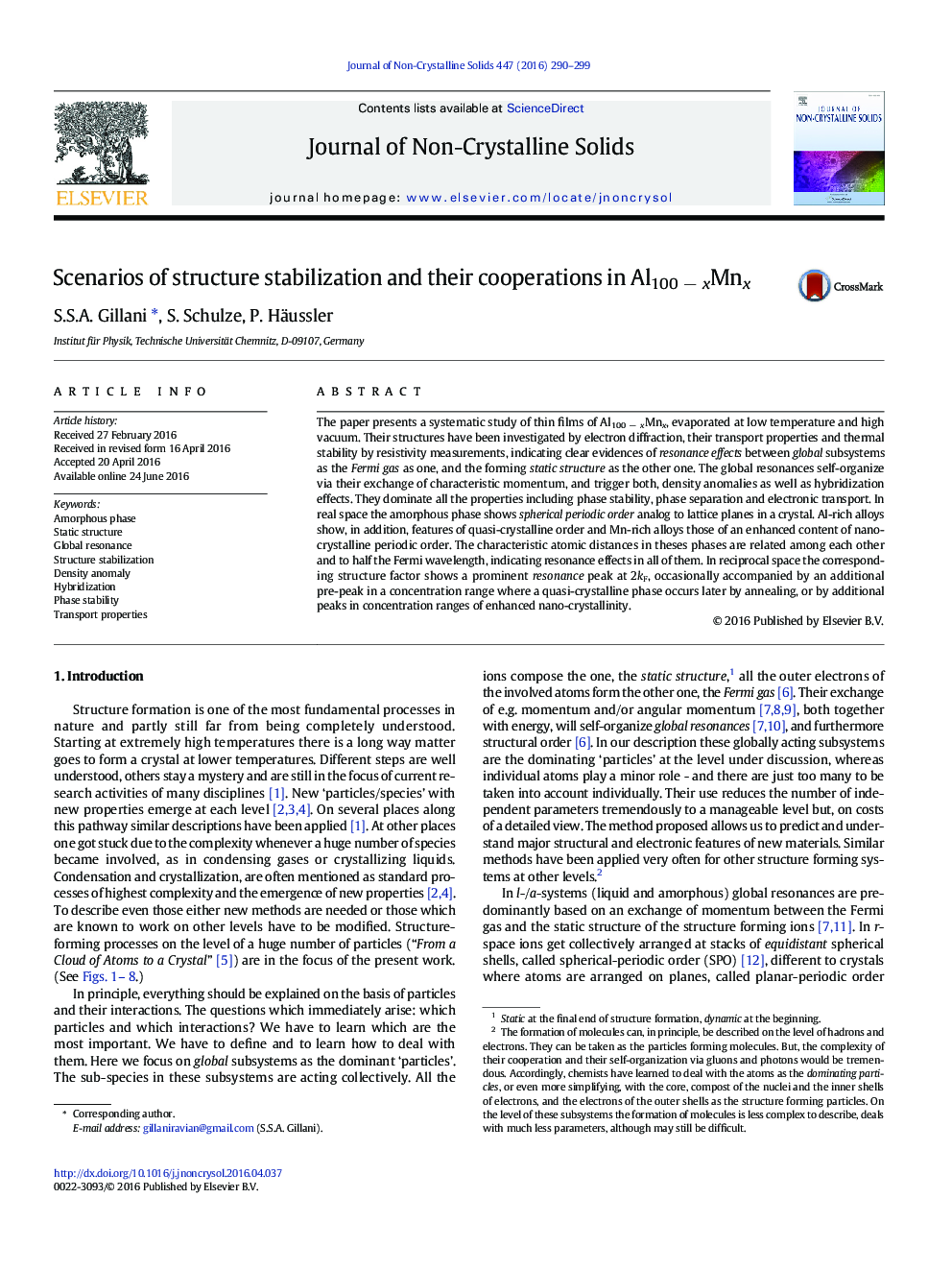| Article ID | Journal | Published Year | Pages | File Type |
|---|---|---|---|---|
| 1480178 | Journal of Non-Crystalline Solids | 2016 | 10 Pages |
•A systematic study of structure forming in AlMn alloys is presented.•There is clear evidence of global resonances between global subsystems.•Hybridization, density anomaly and phase separation are cooperating to stabilize structure.•The effective valence of the elements involved has been determined versus composition.•Transport properties and thermal stability are strongly determined by global resonances.
The paper presents a systematic study of thin films of Al100 − xMnx, evaporated at low temperature and high vacuum. Their structures have been investigated by electron diffraction, their transport properties and thermal stability by resistivity measurements, indicating clear evidences of resonance effects between global subsystems as the Fermi gas as one, and the forming static structure as the other one. The global resonances self-organize via their exchange of characteristic momentum, and trigger both, density anomalies as well as hybridization effects. They dominate all the properties including phase stability, phase separation and electronic transport. In real space the amorphous phase shows spherical periodic order analog to lattice planes in a crystal. Al-rich alloys show, in addition, features of quasi-crystalline order and Mn-rich alloys those of an enhanced content of nano-crystalline periodic order. The characteristic atomic distances in theses phases are related among each other and to half the Fermi wavelength, indicating resonance effects in all of them. In reciprocal space the corresponding structure factor shows a prominent resonance peak at 2kF, occasionally accompanied by an additional pre-peak in a concentration range where a quasi-crystalline phase occurs later by annealing, or by additional peaks in concentration ranges of enhanced nano-crystallinity.
